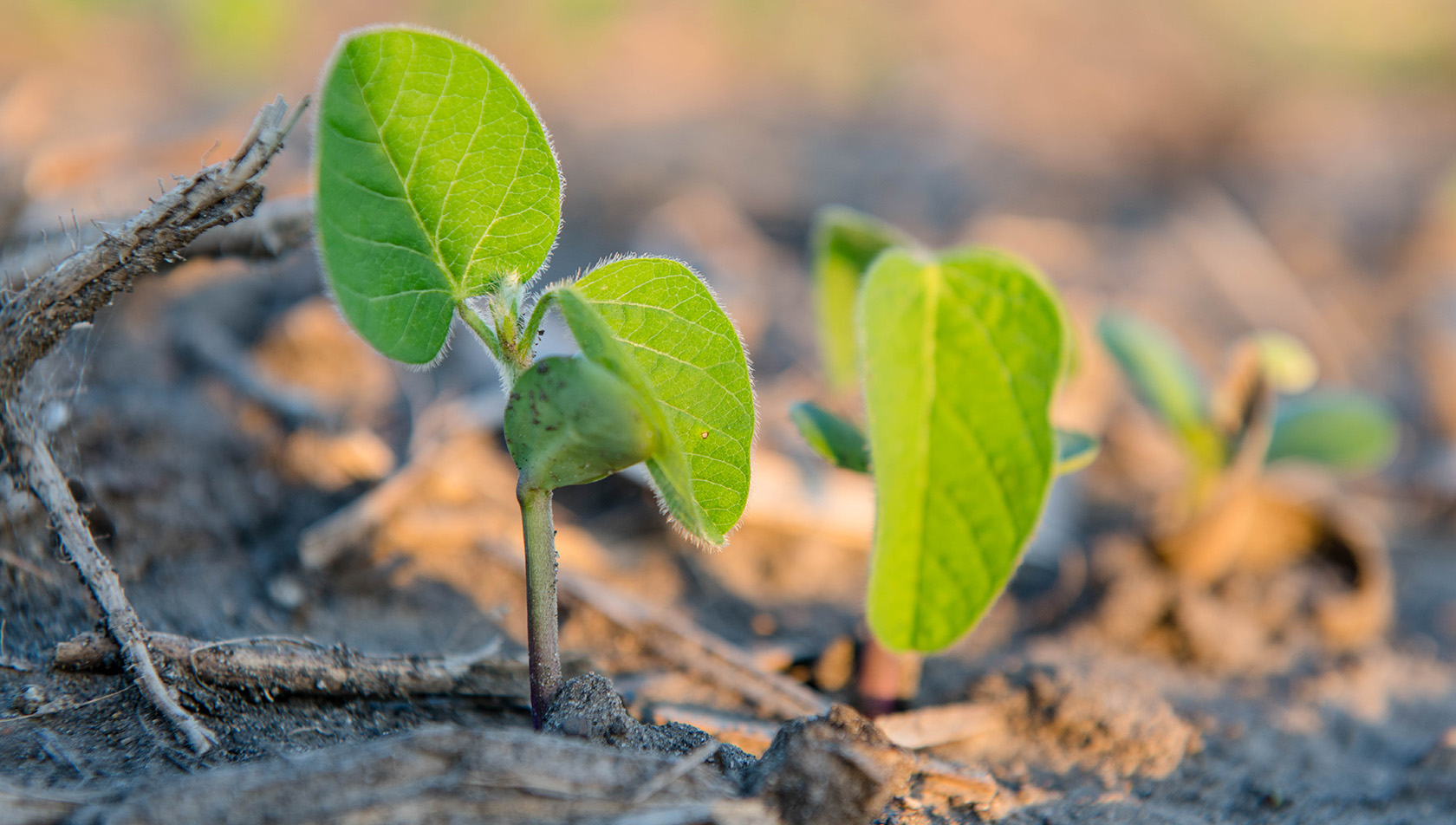
Planting depth and good seed-to-soil contact is key to achieving uniform seed emergence this spring. (Photo credit: Jocyln Bushman/Iowa Soybean Association).
A successful harvest begins at planting
April 14, 2022 | Kriss Nelson
It’s mid-April and farmers are itching to get crops planted. However, it’s important to remember that planting conditions and the forecast are two considerations when determining the planting date.
Optimal planting conditions call for soil temperatures 50-degrees at the four-inch depth and trending warmer.
“It’s the four to five days after planting that become more critical,” says Drew Clemmensen, Iowa Soybean Association (ISA) field services program manager. “As the seed starts to take on water and the radical and mesocotyl begin to emerge, what’s the environment like then?”
Clemmensen says to look to the forecast.
“If it’s dry, and there’s not going to be rain for the next two weeks, I would probably hold off on planting,” says Clemmensen. “If there’s rain forecasted within the next week, especially in drought conditions, I feel more confident planting that seed.”
The Iowa Department of Agriculture’s six to 10-day precipitation and temperature outlook shows some parts of Iowa with near-normal temperatures, with the eastern part of the state leaning toward below-average temperatures. Precipitation shows the state's southern half with near-normal precipitation and the northern half with some chances of above-normal precipitation.
“Seed technologies have come quite a ways, and that allows us to plant in less-than-ideal conditions and still have viable seed that germinates evenly,” says Clemmensen. “
What happens to the seed if it is planted into cold soils and receives cold rain?
Clemmensen says there could be some seed inhibition issues.
“When the seed takes on water and starts to initiate mesocotyl growth and suddenly gets cold, it may start growing in the other direction searching for warmer soils,” says Clemmensen.
Sometimes the seed can correct itself and emerge, but that isn’t always the case.
“That plant has a challenge of getting out of the ground. If it gets far enough behind, it essentially becomes a weed and doesn’t produce as it should,” says Clemmensen. “You run into those obstacles. There are no black and white guidelines saying under a certain temperature or under a certain amount of rainfall, this will or won’t happen. It is sometimes based on luck.”
If you are curious about how soil temperatures are trending in your area, Iowa State University Extension provides a four-inch soil temperature map featuring soil temperatures for each county in Iowa.
Planting Tips
Starting with a uniform planting depth with good seed-to-soil contact is one of the best ways to give the seed a chance at an even, timely emergence.
For corn, Clemmensen says some literature advises a planting depth of 1 ½ to 1 ¾ inches, but he suggests planting deeper, at two inches.
“A deeper planting depth gives us an opportunity for brace roots to form and be more productive than at a shallower seeding depth,” he says. “Err on the side of planting deeper, I have even seen better stands at a four-inch planting depth versus some of those planted shallower.”
Soybeans can be a little more forgiving, Clemmensen says, but going deeper than the 1 ½ inch depth can put the seed in more uniform soil temperatures.
“It gives us an opportunity for all of the seeds to germinate and emerge uniformly,” Clemmensen says. “The topsoil also acts as a buffer to protect the seed from some of those spring temperature influxes.
Clemmensen also advises getting out of the tractor and checking what is happening behind you.
“We all get into that ‘go, go, go!’ mentality. We set the planter and we go. The monitor tells you the spacing is right, the depth is right, but get out and physically check as you go across the field,” he says. “Soil types change, field conditions change and that can affect our seeding placement.”
Crop insurance 101
Multi-peril coverage protects the crop no matter what date farmers plant, says Pat Swanson, along with her husband Don owns Son Risk Management, a crop insurance agency near Ottumwa. However, farmers do not have replant coverage if they plant corn before April 11 or soybeans before April 21.
“It’s always best for them to contact their agent with any questions,” says Swanson, ISA District 9 director. “As soon as they are done planting, they need to report the plant dates and acres to their agent.”
Swanson, who was appointed to the USDA Federal Crop Insurance Corporation board of directors, advises farmers who need to replant and meet the planting date requirements to contact their crop insurance agent before replanting. A crop adjuster will then contact them.
There is also a 20/20 rule that needs to be met.
“Twenty percent of the acres or 20 acres, whichever is the lowest, must be replanted before insurance pays," Swanson says. “Replant pays eight times the spring price of $5.90 for corn per acre or $47.20; and three times $14.33 for soybeans per acre or $42.99.”
Back